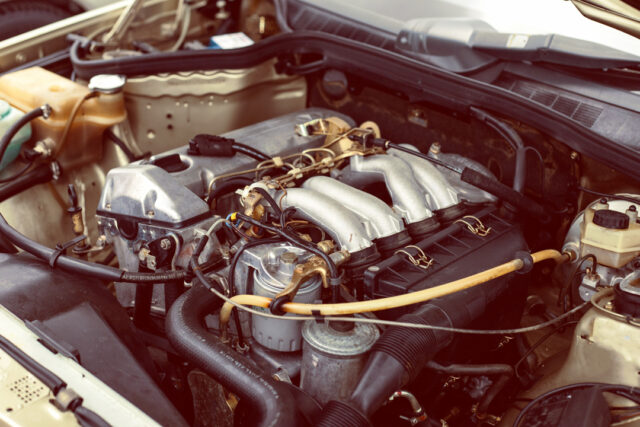Keeping your car in prime condition means more than following a generic checklist. Every car is different, and so are the ways people drive. Whether you’re on the highway daily or just making short trips around town, your car’s maintenance should match your specific vehicle and driving habits.
This guide breaks down the essentials of creating a maintenance schedule that fits your lifestyle and driving patterns. Instead of sticking to a one-size-fits-all approach, you’ll learn how to tailor your car’s care to keep it running efficiently, minimize issues, and avoid unnecessary visits to the mechanic.
Understanding Your Car’s Maintenance Requirements
Start with the Manufacturer’s Recommendations
Every car comes with its own set of rules for keeping it in good shape. Your vehicle’s manual is the first place to look for maintenance guidelines tailored to your car’s make and model. These recommendations aren’t just suggestions, they’re based on how your car was designed to run smoothly. You’ll find things like when to change the oil, replace brake pads, or flush fluids. If you’re unsure where to start, this is your go-to resource for understanding your vehicle.
Don’t Ignore the Age of Your Vehicle
As your car gets older, it needs change. The parts that used to run great may start showing wear and tear, meaning older cars generally need more frequent checkups or repairs. Once your vehicle passes five years or 100,000 miles, it’s time to step up the auto care. Keeping a close eye on things like the timing belt, transmission, and other vital components can save you from unexpected breakdowns later on.
Pay Attention to Mileage Milestones
Some maintenance tasks are all about how many miles you’ve put on your car. Oil changes, tire rotations, and brake inspections usually depend on mileage, and these services keep your car running at its best. For example, many vehicles need oil changes every 5,000 to 7,500 miles, though some can go longer with synthetic oil. Staying aware of these milestones helps make sure you’re not missing any essential maintenance.
How Your Driving Habits Affect Maintenance Needs
City Driving vs. Highway Cruising: What’s the Impact?
Your daily routes can really affect what your car needs. If you’re navigating city streets with frequent stops, your brakes and engine are under more stress. For city drivers, brake checks are more frequent, and fluids like oil and transmission fluid need close monitoring. If you are more of a highway driver, you might escape the stop-and-go wear, but face extra strain on your tires and engine, so your maintenance focus should shift accordingly.
Short Trips vs. Long Hauls: What’s the Difference?
Think short trips are harmless? Not quite. Regular short drives don’t give your engine the time it needs to warm up properly, which can cause buildup over time. On the other hand, long-distance drivers should be more concerned about tire wear, oil levels, and coolant levels. Whichever camp you fall into, knowing how your driving patterns affect your car will help you stay ahead of potential issues.
Weather and Terrain: Why It Matters More Than You Think
Extreme weather and rough roads can be hard on your vehicle. Whether it’s scorching summers, freezing winters, or driving on dirt roads, your car’s parts are dealing with extra challenges. Batteries drain quicker in the cold, windshield wipers wear out faster in heat, and air filters clog more easily in dusty areas. Adjusting your maintenance based on your environment will go a long way toward keeping your car in top condition and avoiding unnecessary auto repair.
Building Your Custom Auto Repair Schedule
When it comes to maintaining your car, breaking tasks down by time and mileage is a smart way to stay on top of things. Focus on the most important services that keep your car running correctly, like oil changes, tire rotations, and brake checks. These services are critical for maintaining both performance and safety. Other services like air filter replacements, battery checks, or fluid top-offs can be done less frequently, depending on your vehicle’s needs.
Staying organized is key to making sure you don’t miss anything. Use tools that work for you, whether it’s a car maintenance app, setting calendar reminders, or even keeping a simple spreadsheet. Many newer cars also come with dashboard reminders for maintenance, which can help keep you on track. The more organized you are, the easier it is to keep up with auto repair needs without the stress of forgetting something important.
Partnering with Professionals
While handling routine tasks like checking tire pressure or topping off fluids can be done yourself, some maintenance requires a professional’s expertise. Mechanics are trained to catch issues that aren’t always visible to the untrained eye, especially when it comes to complex systems like the transmission or suspension.
Developing a relationship with a trusted service center ensures your vehicle gets the expert care it needs. Mechanics familiar with your car’s history can offer tailored advice, helping you stay ahead of potential issues and fine-tune your maintenance schedule to your driving habits.
At Kwik Kar, we’re dedicated to providing reliable, professional auto repair services to our local community. With years of experience, our team is here to ensure your vehicle stays in top condition for all your driving needs.
Is It Time for Your Next Auto Service?
Whether you need routine maintenance or a more detailed inspection, our experts are ready to help. Contact us today to schedule your appointment and keep your car running smoothly.

